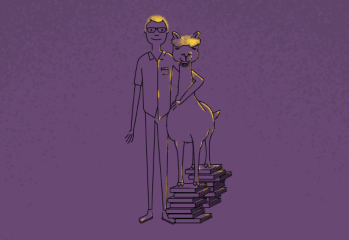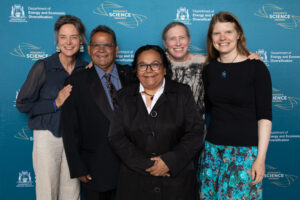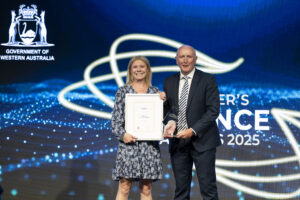Australia’s population has skyrocketed over the past 125 years.
In 1901, 3.8 million people called Australia home.
Today, Australia’s population is around seven times larger, with more than 3 million people living in WA alone.
But the population growth of the world’s sixth-largest country hasn’t always been linear.
RISE AND FALL … AND RISE AGAIN
The nation’s population took a significant hit during World War 1, according to the Australian Bureau of Statistics.
Nearly 40% of Australia’s total male population aged between 18 and 44 enlisted. More than 60,000 of those men never returned home – devastating their families and loved ones.
The loss impacted the nation’s population growth, and due to the men’s young age, it also impacted the national birth rate.
Around 20 years later, Australia entered a post-World War 2 ‘baby boom’, which peaked in 1961 when the birth rate reached 3.6 babies to every woman.

Caption: Australia experienced a post-war baby boom, which peaked in 1961
Credit: Australian Bureau of Statistics
Shortly after, fertility rates started to decline as the cost of having children rose and opportunities for women to remain in the workforce or achieve higher education increased.
Today, the national fertility rate is lower than ever at 1.5 births per woman.
Some politicians suggest cash incentives to young couples who have a baby could help drive up the nation’s birth rate.
But Australia’s population continues to grow and it’s largely thanks to newcomers.
MODERN MIGRATION
In 2024, people migrating to Australia made up nearly 30% of the national population growth.
WA had the fastest growth rate at 2.5%, which equates to more than 72,000 people relocating to our state.
“Over the last decade or so, the state has actually grown substantively,” says Professor Amanda Davies, Head of the University of Western Australia’s School of Social Sciences.
“Essentially, we’ve emerged as a very strong, medium-sized global city.”
If international migration stopped, WA’s population would start to rapidly decline, says Amanda.
“We would decline in about 15 years, perhaps a little bit earlier because of the declining fertility rate.”
But the steady rise in WA’s population size comes with challenges.
GROWING PAINS
Like any country experiencing population growth, the influx of newcomers can put a strain on the community – from housing affordability to a clash of cultures.
“We’re starting to see that in the very large cities on the east coast, perhaps a lack of management and planning in those spaces – road infrastructure, power infrastructure, housing and water – becoming really major barriers to people moving there,” says Amanda.
Caption: A growing population can put a strain on housing affordability
Credit: Maximillian Conacher via Unsplash
“[The] population in Sydney is propped up and keeps growing by international migration but people then move out because the 2-hour commute is intolerable for many.”
Amanda said the bigger piece of the puzzle is a growing community’s social tolerance of larger populations.
“We’re seeing quite a lot of grumblings in Australia broadly because the rate of growth has far exceeded the capacity of people to keep up with the change that then results in, so the increased congestion, increased housing prices … those sorts of things,” says Amanda.
“Because it’s been so fast, it’s really causing a lot of disquiet about the way that society is then changing and the nature of life.”
While these pressures may cause unease for some members of the community, a growing population is vital to help those communities thrive.
FROM LITTLE THINGS, BIG THINGS GROW
Population growth is fundamental to a growing economy due to supply and demand.
As more people join a community, there’s greater demand for goods and services, including healthcare and education, which have recently recorded the largest growth in migrant employment.
Caption: Migrants work in vital roles in Australia, including healthcare and education
Credit: Artur Tumasjan via Unsplash
Peter van Vliet is Chief Executive Officer of the Migration Institute of Australia.
“I think it’s important that people are informed about what’s at stake … if you were to, for instance, stop migration,” says Peter.
“In any major city in Australia, if you went into one of those workplaces and said, ‘everybody who’s a migrant, leave’, you would find probably around 20% of the staff left.”
Migration is one of the key reasons Australia has remained a successful economic country, says Peter.
With Australia’s population projected to grow to more than 32 million over the next decade, demand for services will only continue to grow.
“We’ve seen that in countries like Japan, where they have low birth rates, they don’t have migration and basically their economy starts declining and the living standards start falling,” says Peter.
“We’ve had decades of continuous economic growth in Australia, which most other countries haven’t had.
“I think that’s largely the result of migration, and that is something that benefits all Australians.”









